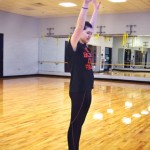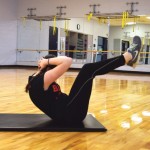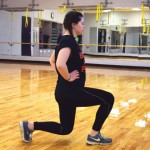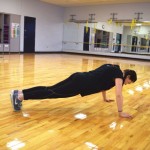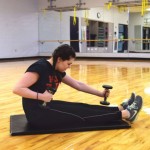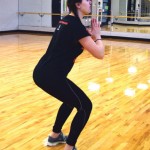Has a lack of time, low motivation, uncertainty about what to do and how to do it, or just pure laziness kept you from going to the gym? Never fear: there’s a new workout regimen in town.
High Intensity Interval Training (HIIT) is a great way to both improve and shorten your workouts without sacrificing results. The process consists of doing any form of concentrated exercise for a short period of time, taking a quick rest, and then moving on to another exercise.
“HIIT is the hardest you could possibly work for [about] 20 seconds, then come back down,” said Marino Gym personal trainer and fourth-year health science major Rebecca Rosenblum. “The basic idea is that when your heart rate is above a certain threshold you burn more fat. It’s not just high intensity for 20 minutes. The real benefit comes from moving in and out of the range.”
There is no one ideal HIIT workout — you craft one around your own personal goals, which is a big factor in its popularity. However, both Rosenblum and fellow Marino personal trainer Camille Chetrit stressed that it’s important to know what your goals are and to know what to keep in mind before creating a workout.
According Chetrit, a fourth-year health science major and group fitness instructor, 15 minutes of HIIT is the equivalent of 45 minutes of running.
“There are so many HIIT workouts out there,” Chetrit said. “But what’s more important is understanding the method of how to pick things out.”
When creating a circuit, one can essentially pick any exercise and incorporate it. In fact, you can even combine two or more into one set — a “super set.” When creating a super set, focus on opposing muscles. A set with both push-ups and work on a bench press wouldn’t make sense, Rosenblum said, as both of these exercises target the same muscles. The point is to target certain groups of muscles at one time while the other muscles rest.
According to Rosenblum and Chetrit, there are three steps to creating your ideal HIIT workout:
The first is to pick a focus. What is your goal for this workout? Do you want a leg day? Do you want to have a full-body workout? Deciding this is the most important thing when working out HIIT-style.
The second step is to decide on intervals for each exercise. An interval can be any work-rest ratio, but make sure the interval you choose is conducive to the exercise you’re doing. For example, it would make sense to use a 30/30 (seconds of work/seconds of rest) interval for sprinting and walking, but a 25/5 interval might be better for squatting and standing combinations.
Chetrit also suggests that each interval you choose fits into one minute. Her favorite is the tabata interval: 20 seconds of work, 10 seconds of rest. By working tabata-style, you can do a move for two reps — or two different moves for one rep each — and fit that evenly into one minute.
The final step is to pick a total workout time. When setting the time, according to Chetrit, it is important to keep in mind that you should repeat each exercise at least twice to really get the effect.
HIIT workouts may be intense, but their appeal lies in their versatility.
“You can get so creative [with it], and the good thing about it is that you can easily make up your own instead of following someone else’s,” said Rosenblum.
Whether your goal is to lose weight, sculpt, or maintain your body shape — HIIT is the way to go. To get started, check out the basic 12-minute HIIT circuit suggested by Rosenblum and Chetrit on the next page.
HIIT the Gym
Repeat each exercise for 20 seconds, rest for 10 (tabata style), and then move on to the next exercise. Go through the circuit four times, and you’ve got yourself a 12-minute HIIT workout. You can modify this as much as you want. Make sure to do plenty of stretching afterwards to cool down.
